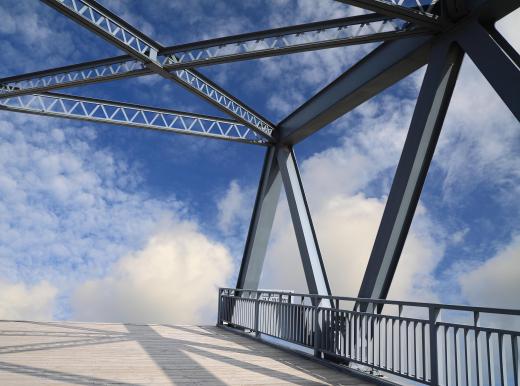An angle iron is a flat metal rod that has been folded to a 90-degree angle along its length, resulting in an L-shaped piece. Usually the two sides of the angle are of equal length. Heavier angle iron is often a structural element in buildings, bridges, and so on, while a lighter version is used for a variety of supports. An adjustable bed frame, for example, is made of this material.
Iron and steel are the most common materials used to make this mate, especially when it will be used in a structural framework. In these cases, the rod is often called angle steel or steel angle iron. Aluminum is used when weight or rust are important considerations. Brass angle iron is sometimes used in projects, especially when the rod will be visible in the finished work and aesthetic appeal is important. Sometimes angle iron is sold with a powder finish that resembles paint.

Angle iron is available in several standard sizes, usually expressed by naming the length of one side. That with longer sides is typically made of thicker metal and has a thicker “root,” the area where the bend is located. Larger versions can support heavier loads.
Slotted or pierced angle iron has holes at standard intervals along both sides. Usually the holes are one inch (2.54 cm) apart as measured from the center of each hole. The holes are oval rather than round to allow for different stress in the finished product. Slotted angle iron is often used for uprights in commercial shelving, since sections are easy to assemble with nuts and bolts. Precut lengths with formed metal shelves are often packed and sold as garage shelving.
Angle brackets are sometimes called angle irons. These are also L-shaped pieces of metal, but the fold runs across the width of the flat metal rod instead of along its length. Angle brackets are often bolted to the wall and used to support shelves.
